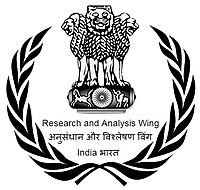
Photo from wikipedia
With advances in knowledge and treatment options, pulp regeneration is now a clear objective in clinical dental practice. For this purpose, many methodologies have been developed in attempts to address… Click to show full abstract
With advances in knowledge and treatment options, pulp regeneration is now a clear objective in clinical dental practice. For this purpose, many methodologies have been developed in attempts to address the putative questions raised both in research and in clinical practice. In the first part of this review, laboratory-based methods will be presented, analyzing the advantages, disadvantages and benefits of cell culture methodologies and ectopic/semiorthotopic animal studies. This will also demonstrate the need for alignment between two dimensional and three dimensional laboratory techniques to accomplish the range of objectives in terms of cell responses and tissue differentiation. The second part will cover observations relating to orthotopic animal studies, describing the current models used for this purpose and how they contribute to the translation of regenerative techniques to the clinic.
Journal Title: International endodontic journal
Year Published: 2022
Link to full text (if available)
Share on Social Media: Sign Up to like & get
recommendations!